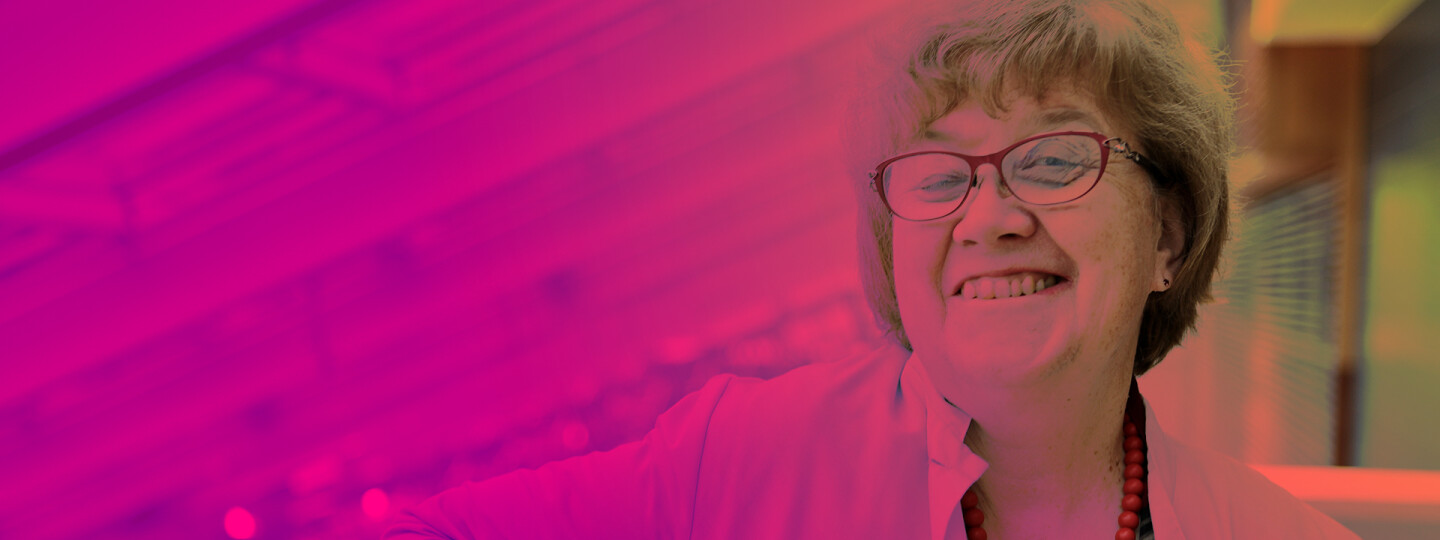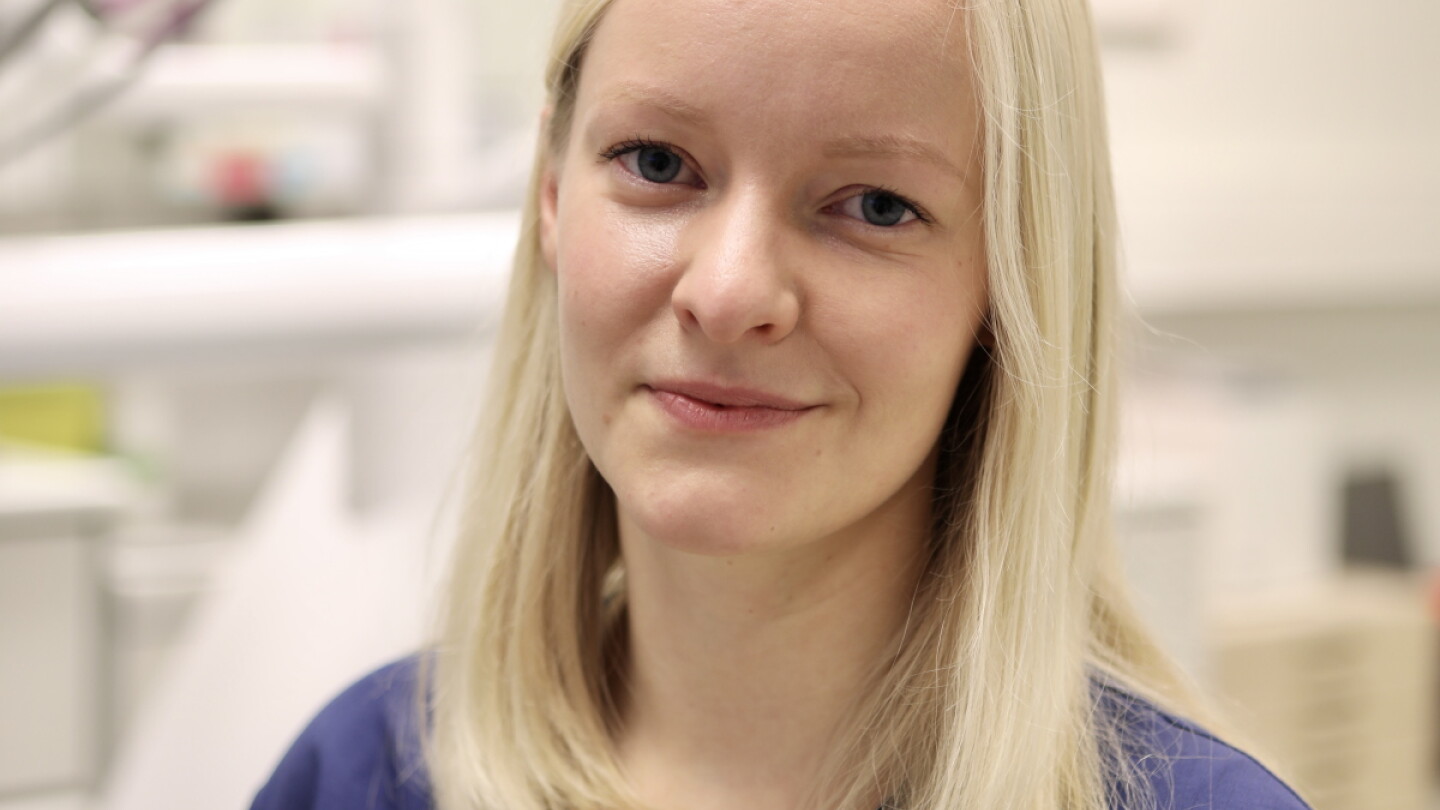Sleep apnoea causes interruptions in breathing during the night. This increases the risk of cardiovascular diseases, as the heart cannot withstand the strain of sleep apnoea. Turku is one of the leading centres of sleep apnoea research in the world.
Professor of Pulmonary Diseases Tarja Saaresranta has many irons in the fire in sleep apnoea research.
She has been conducting research on sleep and sleep apnoea for a quarter of a century and reflects on how research volumes and awareness of the topic have grown. Today, more research is also conducted on women, the effect of progesterone on sleep apnoea, and the effect of hormonal factors on severe respiratory insufficiency.
Sleep apnoea is very common. In Finland, for example, it affects more than half a million people, but even more are at risk of developing it.
Obesity is one of the most significant, but not the only, risk factor of sleep apnoea.
Breathing becomes more vulnerable at night
Tarja Saaresranta describes that sleep apnoea has its roots in the regulation of breathing, which can be very sensitive. When you fall asleep, or if you stir during sleep, your breathing begins to oscillate. This causes isolated interruptions in sleep.
"If you were to describe breathing as a ball at the end of an elastic band, in sleep apnoea it would stay bouncing up and down. Some people are very sensitive to stirring during their sleep or waking up. Their respiratory regulation is more sensitive in any case. When we fall asleep, our muscles relax. However, for some of us, the muscles relax too much, and the upper airway does not receive a strong enough command to stay open.”
According to Saaresranta, it is very important to develop research and to be aware of what is happening in other parts of the world. However, not everything can be applied from one country to another, because the healthcare systems differ. For instance, the level of knowledge, understanding of diseases and access to the internet are different, for example, for starting CPAP treatment.
A CPAP device is used to treat sleep apnoea during sleep at night. With a slight overpressure, the device blows a steady pressurised airflow into the upper airway through the mask during sleep. This allows the breathing to flow unhindered. The treatment prevents interruptions in breathing that interfere with sleep, cause intermittent lack of oxygen, and strain the body.
“CPAP masks and devices have evolved and have different algorithms and adjustment possibilities. Sleep apnoea rails have also evolved. Furthermore, drug therapies are being studied constantly, and therefore it is important to learn to categorise sleep apnoea more precisely, as it is currently treated as a single disease”.
Challenge of identifying the form of disease
Sleep apnoea is a syndrome with different phenotypes and mechanisms which should be distinguished to be able to offer targeted treatment to specific patient groups. For now, sufficiently simple diagnostic methods suitable for patient care are not available.
"When the different forms of sleep apnoea can be distinguished, it is easier to develop drug therapies, for example. In May 2021, a stimulant drug was launched on the Finnish market, which benefits those who experience great fatigue despite CPAP therapy. The drug is suitable for a small percentage of patients. However, it is not yet a reimbursable medicine,” says Saaresranta.
Mobile app offers information on eating
Saaresranta has begun a collaborative research with the Department of Computing at the University of Turku and microbiologists from the University of Turku and the University of Helsinki. They are developing a new mobile app where you can add information about your meals. The study monitors how the timing of eating affects different people and is linked to weight, blood pressure, blood sugar, sleep quality, and gut microbiota.
"Our goal is to find ways to control weight in sleep apnoea patients and others alike, and to get health benefits for common diseases”, says Saaresranta.
She also highlights a doctoral dissertation on how CPAP treatment for the elderly is conducted successfully. It examines which patients in particular need physical control from a doctor and nurse. In addition to sleep apnoea, the aim would be to find patients suffering from respiratory insufficiency due to chronic obstructive pulmonary disease (COPD) or weight gain.
"This way, we aim to target the treatment correctly in the ever-increasing number of patients”.
Sleep apnoea is easily undiagnosed in women
At Tyks Women's Hospital, Professor Päivi Polo and her group focus on menopausal women. The research Sleep Apnoea and Polycystic Ovaries sheds light on the hormonal causes that predispose to sleep apnoea.
In menopausal women, sleep apnoea and menopausal symptoms often overlap. Hot flashes are a good example, as night sweats are one of the symptoms of sleep apnoea.
Thus, sleep apnoea may remain undiagnosed in women, as it may appear more as insomnia symptoms caused by menopause.
Many networks for the study of sleep apnoea
Research is crucial for the treatment of sleep apnoea, as in order to treat the disease, it is necessary to distinguish its various causes. Turku is an internationally acknowledged and one of the leading centres for sleep apnoea research in Europe.
The Sleep Research Centre of the University of Turku, headed by Tarja Saaresranta, is involved in two important international studies. The study European Sleep Apnoea Database (ESADA) is the world's largest study of sleep apnoea patients, which examines, monitors and treats patients in more than 30 European hospitals, involving more than 40,000 patients.
The study provides information on different treatments, the effects of illnesses, and different types of sleep apnoea patients. The results can be utilised in developing treatments.
Sleep revolution is an EU project that aims to develop new, better diagnostics. This would provide information on the risk of sleep apnoea to the overall health of the patient and how to better involve the patient in the treatment. The study involves researchers with backgrounds in physics from the University of Eastern Finland and Reykjavik University, and applies different machine learning methods.
Dental hygienist and sleep apnoea nurse — important patient care partners
Sleep apnoea patients can often also be helped by rail therapy. Dental Hygienist Katja Urhonen receives patients at the Department of Oral and Maxillofacial Diseases. This is a fairly new and well operating model at Tyks, which is in use elsewhere as well.
The dental hygienist takes measurements for the rails by scanning and directs the patient in their use. The work speeds up treatment and frees up the working time of specialised dentists.
The sleeping apnoea rail brings the lower jaw forward, keeping the upper airways open to allow unhindered breathing. The number of referrals to rail therapy has increased, as has the diagnosis of sleep apnoea patients.
The sleep apnoea rail can be used especially in people with mild sleep apnoea, but also in other sleep apnoea patients, if CPAP device treatment is not successful for some reason. CPAP device treatment is the primary treatment for patients with moderate to severe sleep apnoea.
Self-start brings treatment forward by months
Päivi Arvola, a nurse at the Pulmonary Diseases Outpatient Clinic, does independent reception work as a sleep apnoea nurse. Tyks introduced self-starting CPAP device treatment just over two and a half years ago. This means that the patient can have access to a CPAP device immediately after visiting a doctor.
With self-start, treatment has been brought forward by three months. The self-start requires that the patient has a smartphone and the ability to follow the instructions step by step.
“I stress to the patients that the device does not provide supplemental oxygen, it only uses a slightly higher air pressure to keep the upper airways open during sleep, allowing breathing to flow unhindered,” describes Arvola.
The best way to adapt to CPAP device therapy is to be able to focus on a calm breathing pace, while initially intensifying the exhalation a little.
“When counselling the patient, I guide them towards the correct breathing technique where they calm down their breathing. This can prevent the panic experienced by some patients and enables that the use of the device begins smoothly.
The most rewarding part of patient work is when a patient goes home satisfied and confident after receiving guidance from the clinic”.
Turku University Hospital, the Faculty of Medicine at the University of Turku, and the surrounding campus area form a multidisciplinary cluster of excellence in which research and the high-quality treatment based on it form a seamless entity. More than one thousand scientific studies are under way in these organisations, engaging approximately 1,500 experts. Approximately 200,000 patients receive treatment at Tyks every year. Visits to outpatient care total over 1.2 million and days at inpatient care almost 300,000. The University of Turku and the Hospital District of Southwest Finland are part of the Health Campus Turku network, which also includes Åbo Akademi University, Turku University of Applied Sciences, Novia University of Applied Sciences and Turku Science Park Oy.
Text and photos: Sini Silván
Translation: Jennifer Stanger







